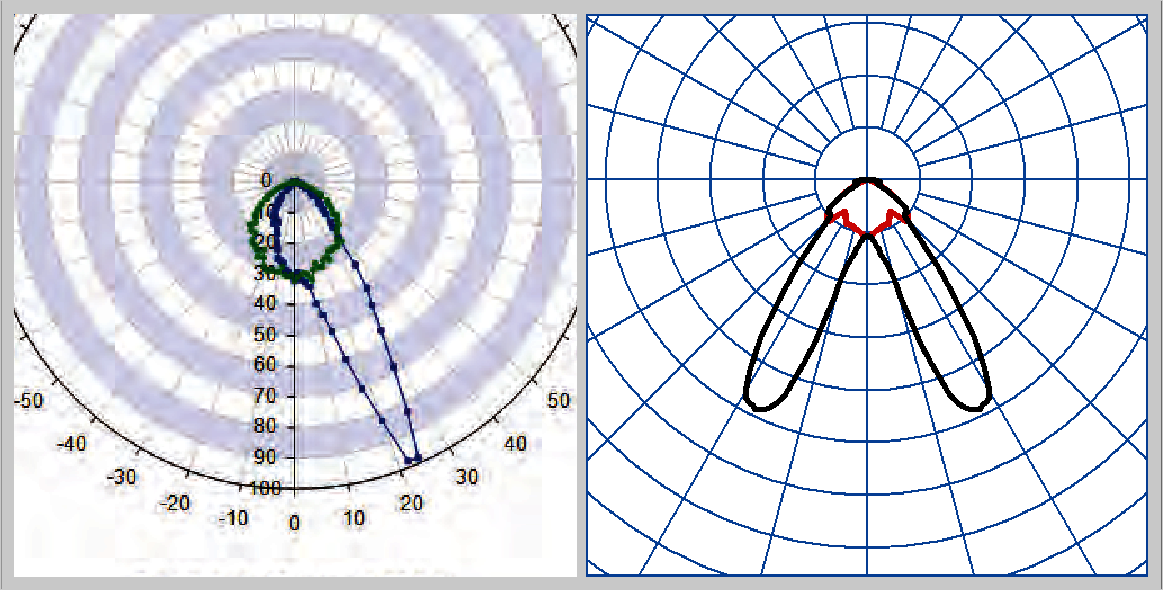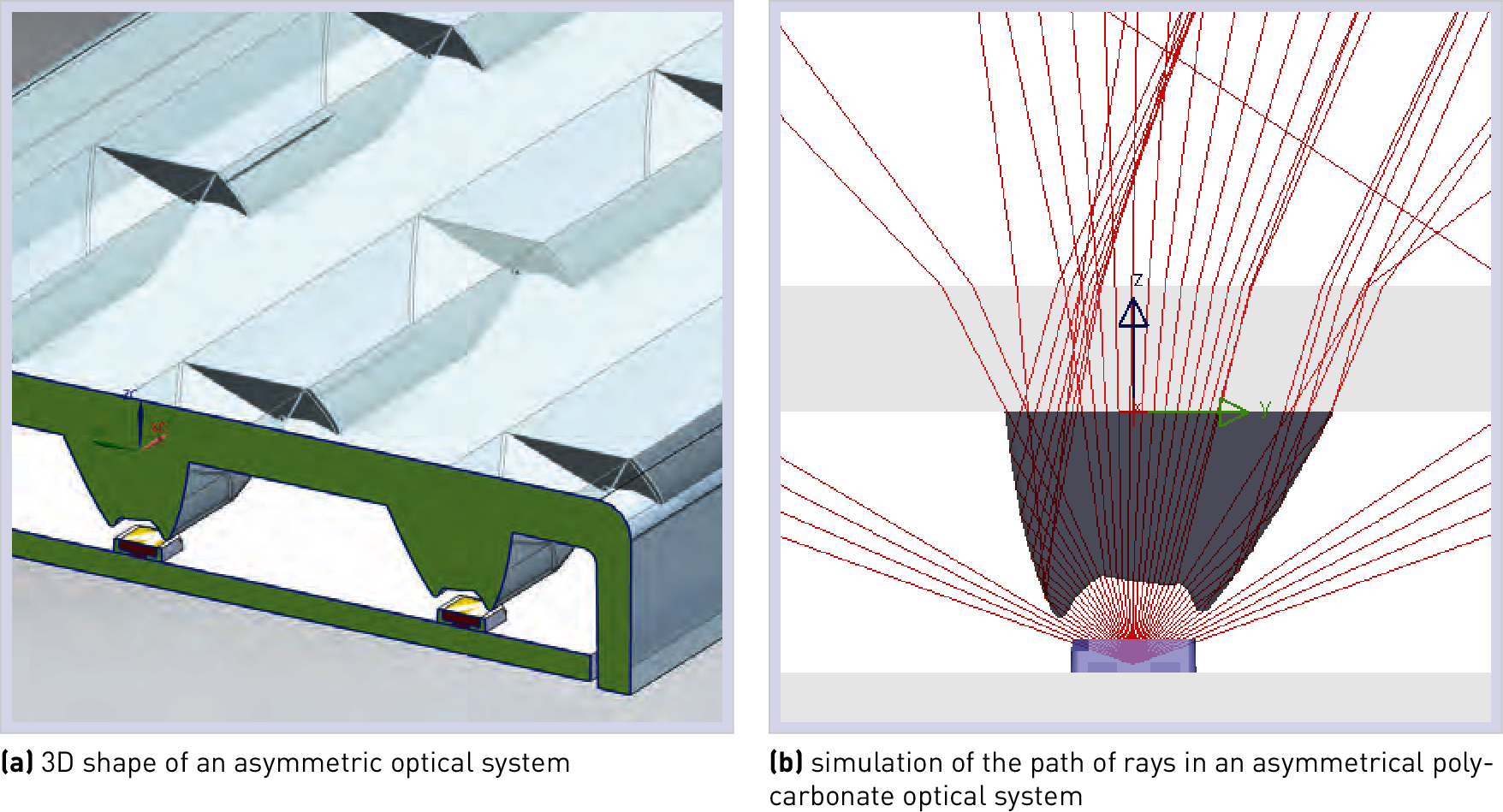The path from photometric definition of tasks to realisation by lighting designers and luminaire manufacturers is hardly imaginable in this day and age without simulation methods. They facilitate an optimisation of photometric luminaire properties with regard to application-specific requirements and desired light effect. This concept produces the tasks for the lighting engineer regarding the development of the luminaires’ optical system.
Optics development

Figure 3.176: Strongly asymmetric luminous intensity distribution of an LED luminaire (right) developed using simulation (left)
Utmost precision is required, in particular when optimising photometric luminaire properties with regard to specific application constellations. Targeted direction of light – e.g. from a point LED light source through individual lens systems manufactured using die-casting – is the objective. The path of the light, which is coupled in, through the plastic body must be predetermined precisely. Deviations within the limits of inevitable manufacturing tolerances must be considered in detail here to ensure reproducible photometric quality.
Our optics developers have created suitable tools for this purpose. The prerequisite was that the photometric properties of all materials as well as further influencing factors had to be available as information data and needed to be processed using validated methods.

Figure 3.177: Development of an asymmetric optical system for a point LED light source using
simulation. Exact direction of light via refraction and total reflection at the boundary surfaces of high refractive polycarbonate and air.
The effectiveness of this development method is confirmed regularly by comparing photometric systems developed in a virtual plane to actual luminaires in our photometric laboratory.